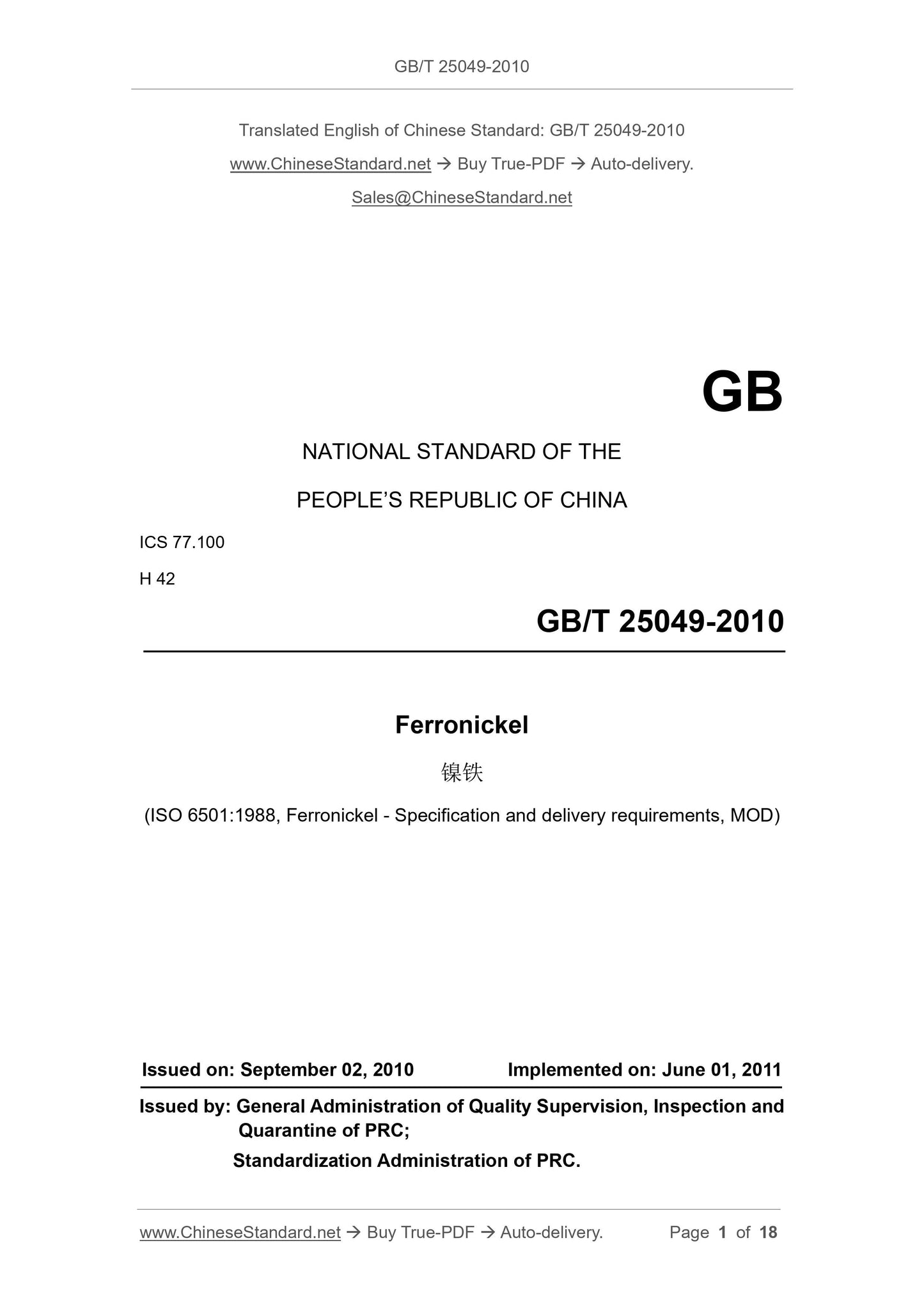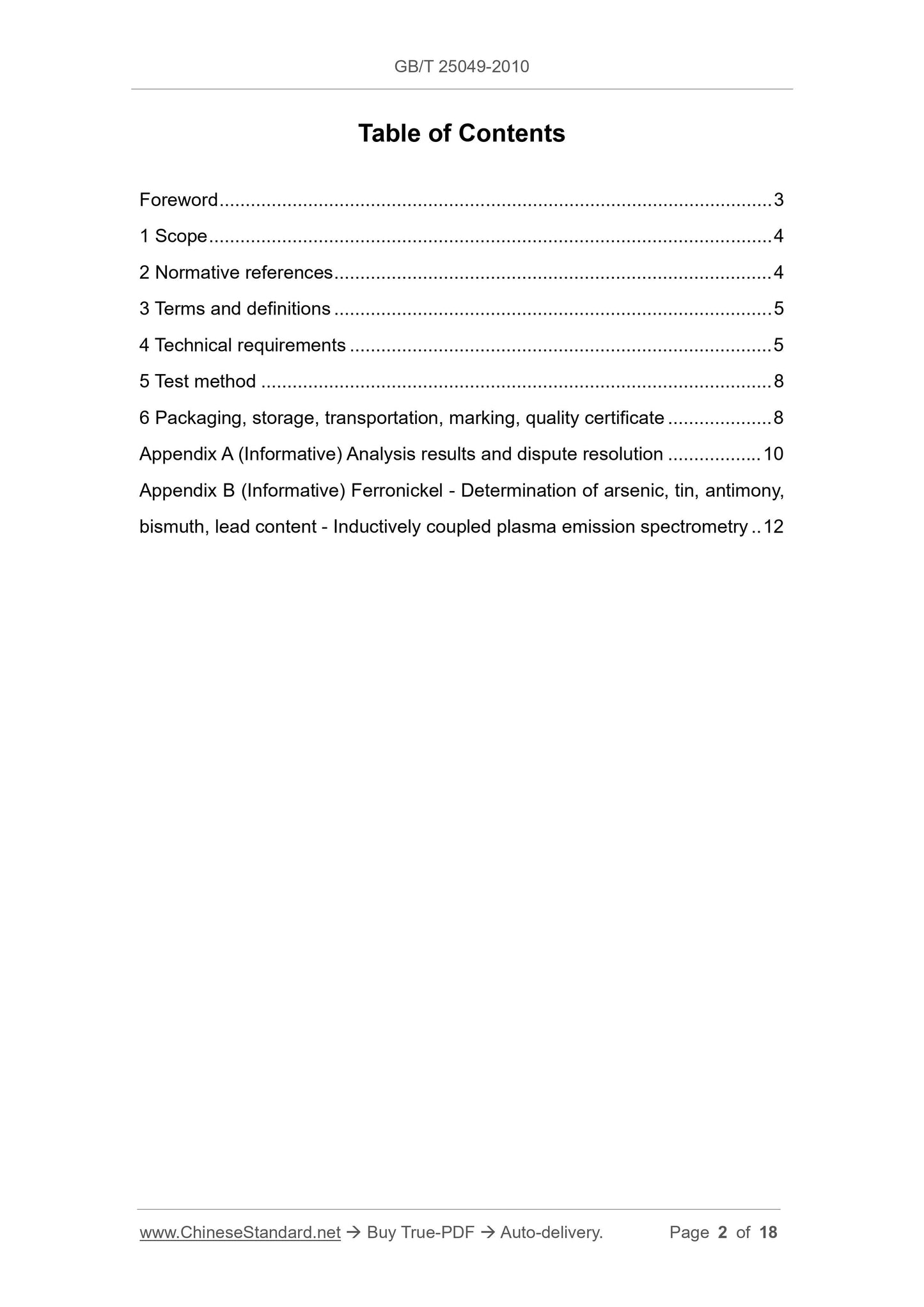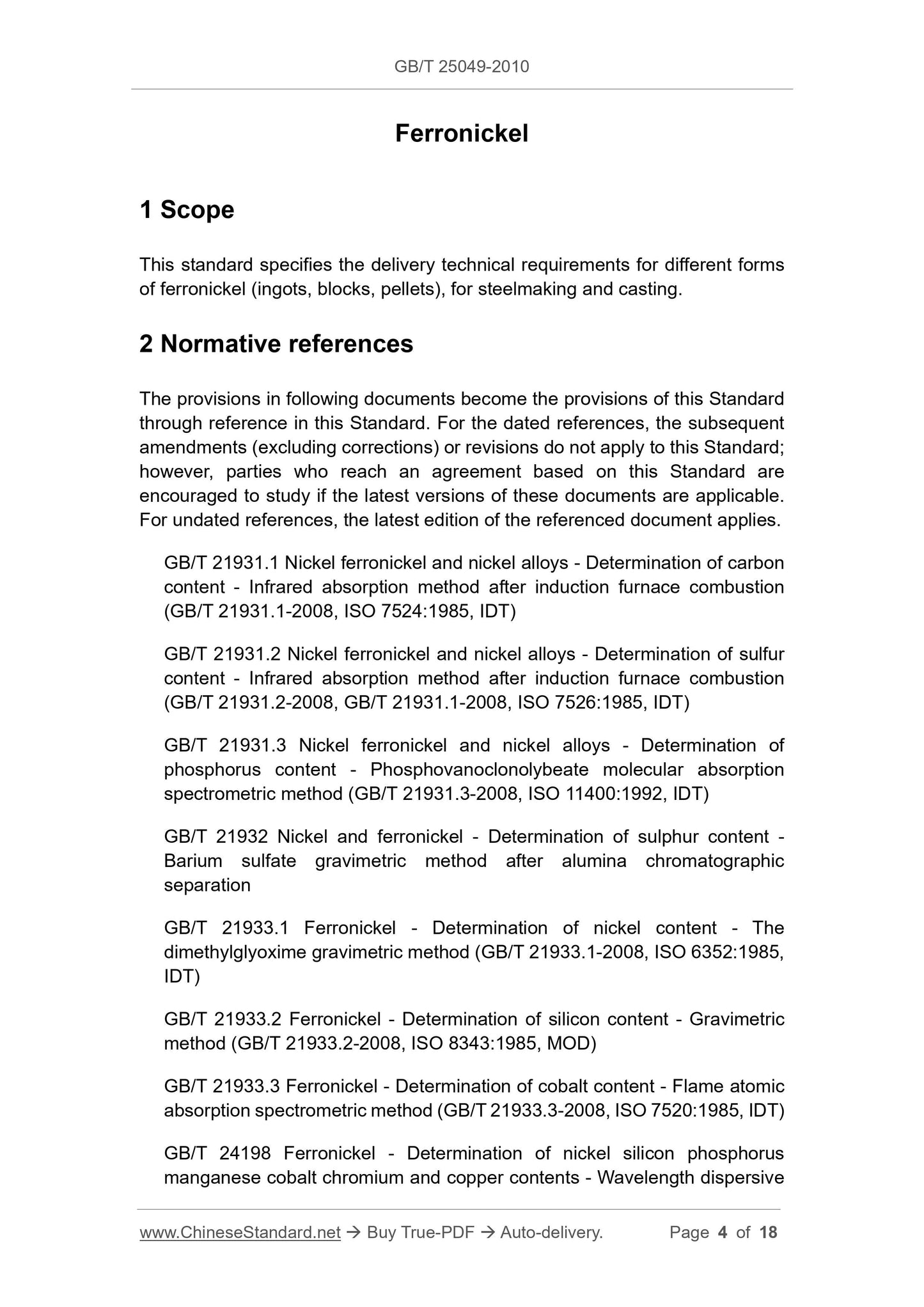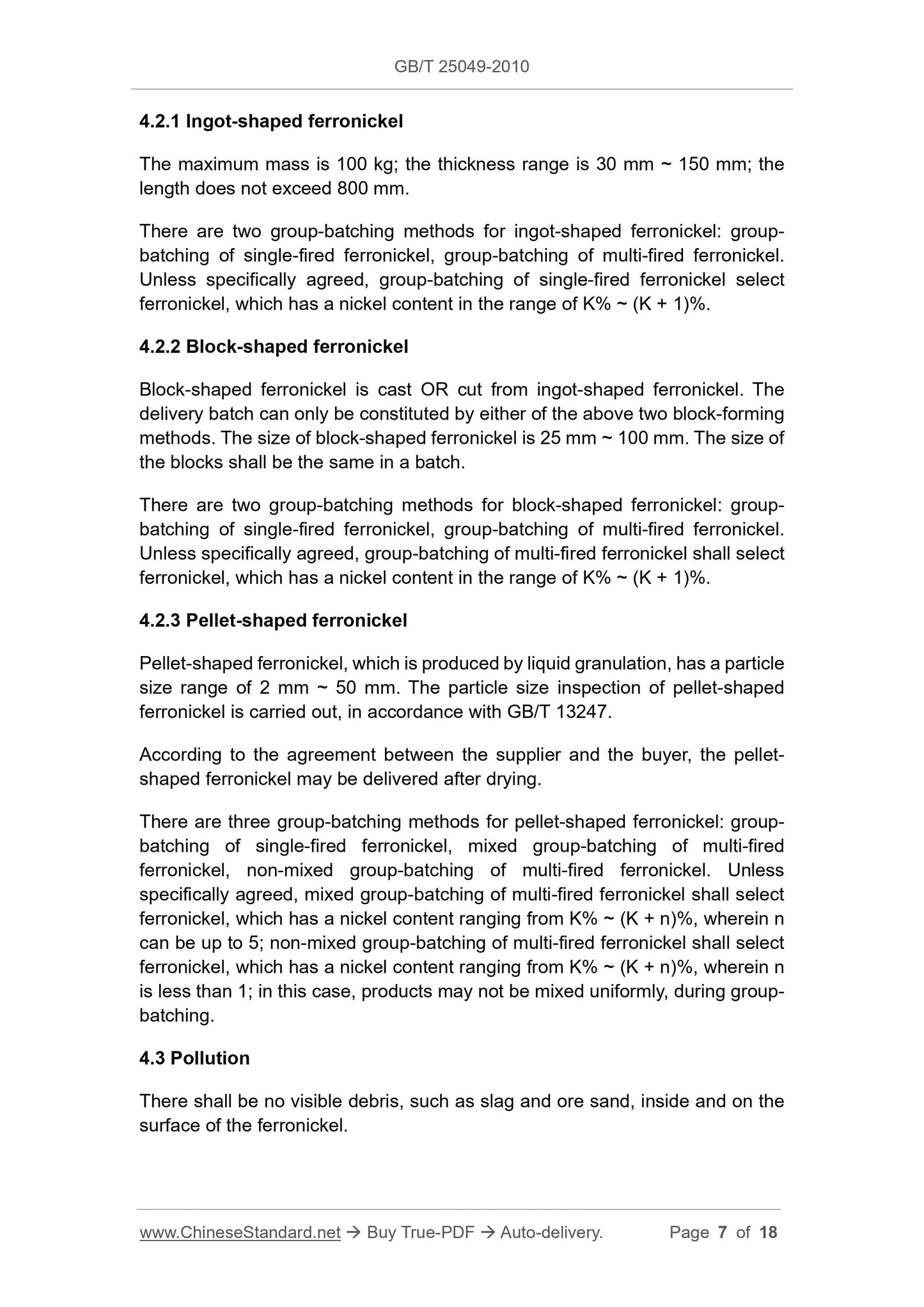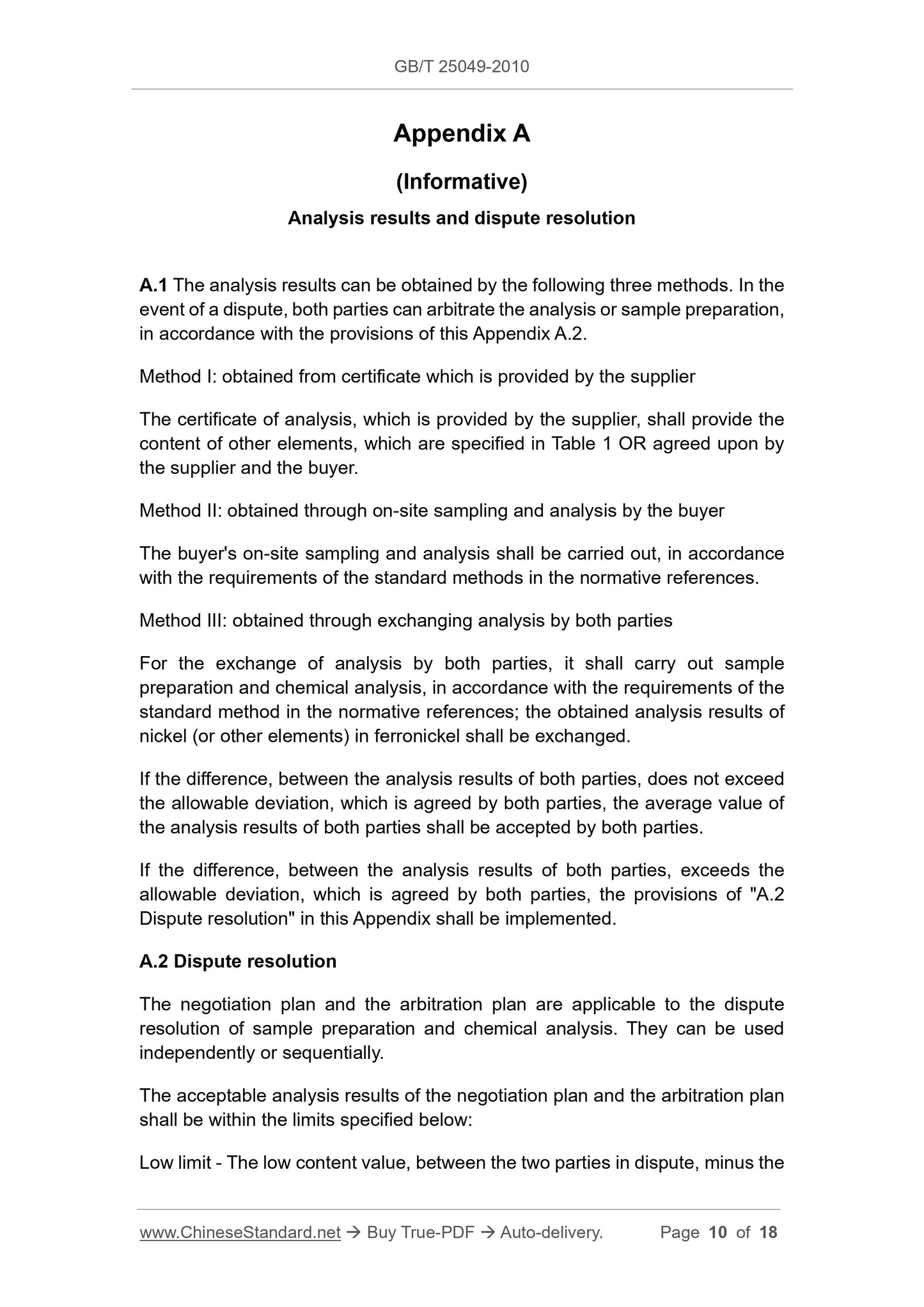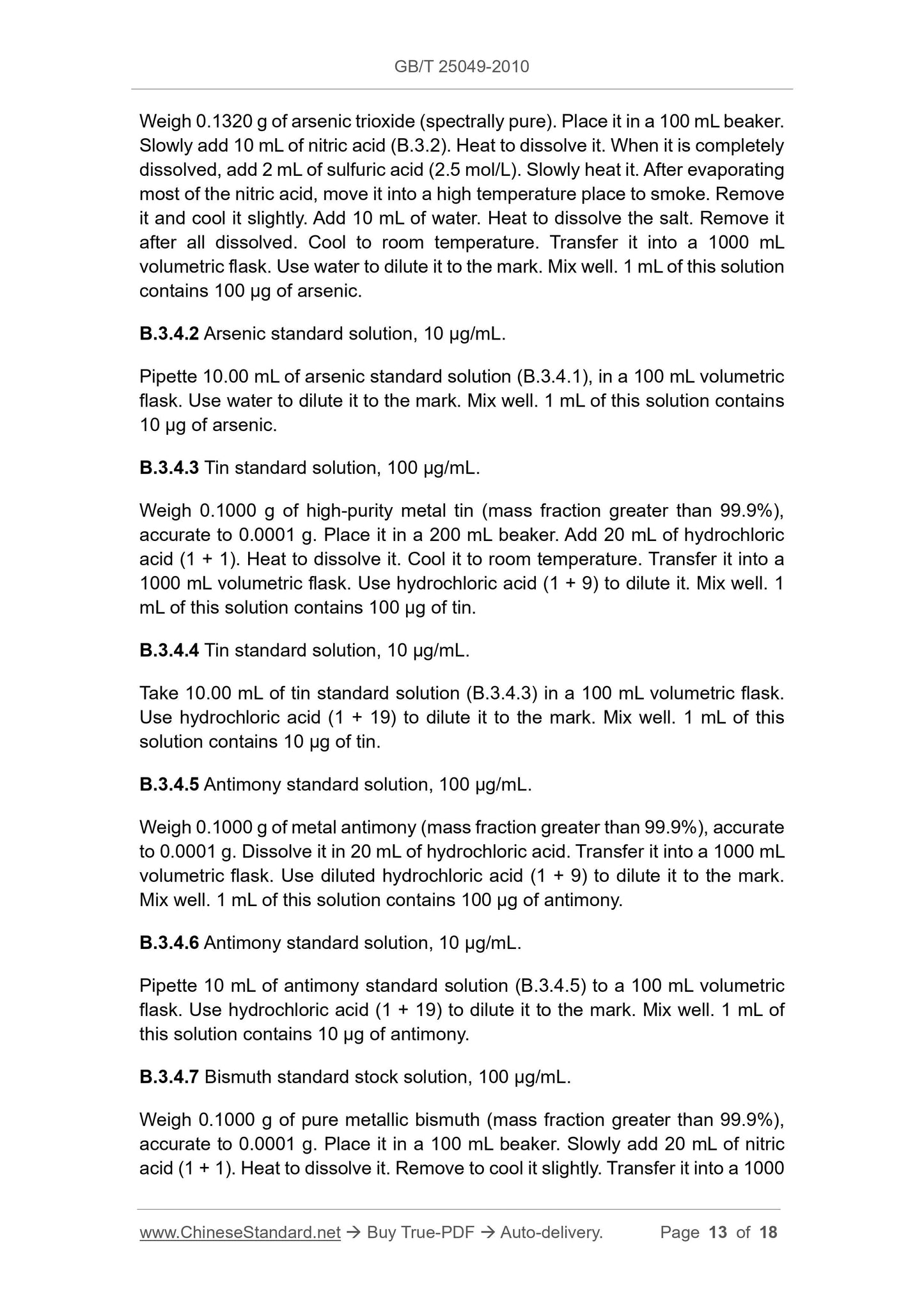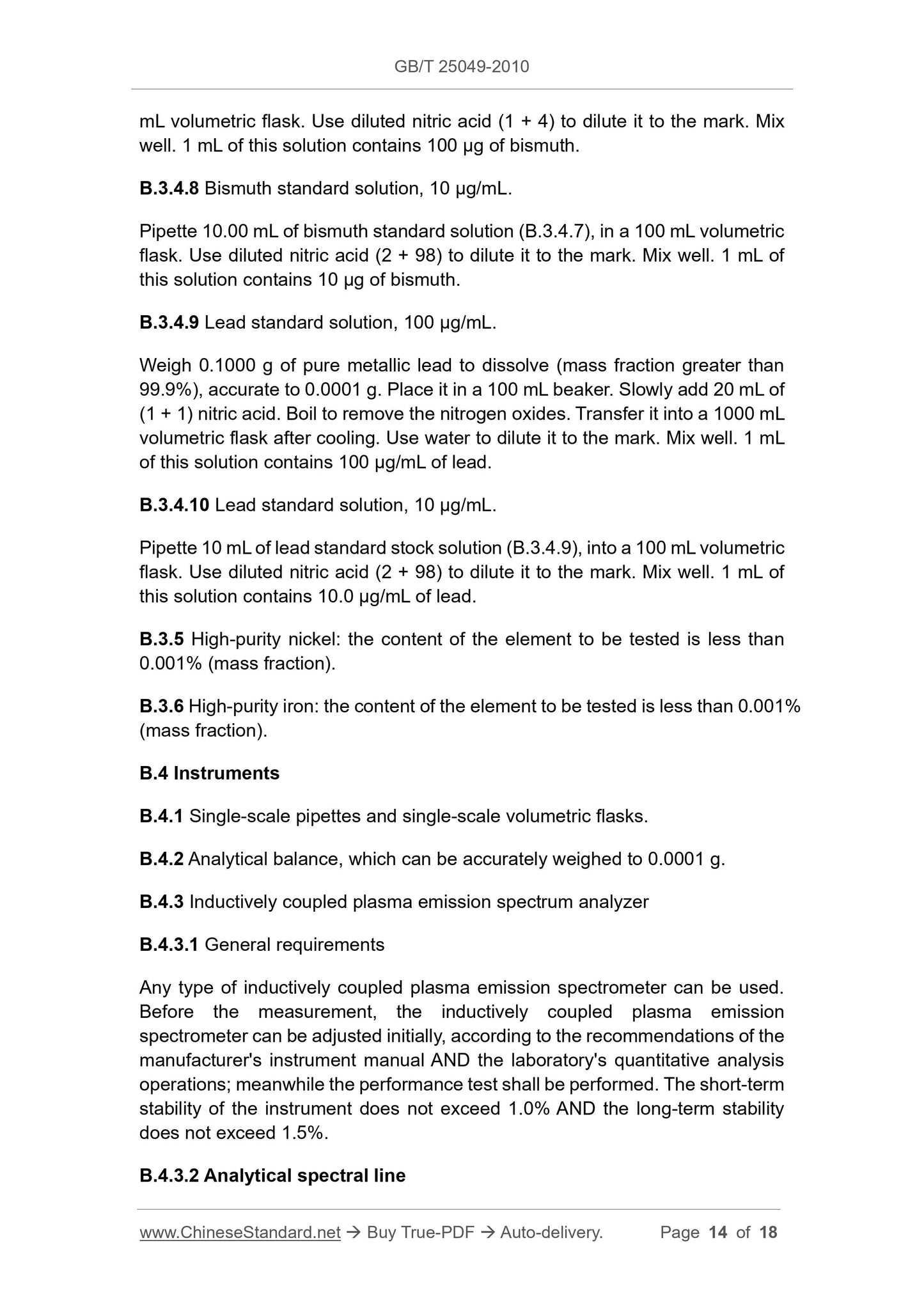1
/
of
7
www.ChineseStandard.us -- Field Test Asia Pte. Ltd.
GB/T 25049-2010 English PDF (GB/T25049-2010)
GB/T 25049-2010 English PDF (GB/T25049-2010)
Regular price
$190.00
Regular price
Sale price
$190.00
Unit price
/
per
Shipping calculated at checkout.
Couldn't load pickup availability
GB/T 25049-2010: Ferronickel
Delivery: 9 seconds. Download (and Email) true-PDF + Invoice.Get Quotation: Click GB/T 25049-2010 (Self-service in 1-minute)
Newer / historical versions: GB/T 25049-2010
Preview True-PDF
Scope
This standard specifies the delivery technical requirements for different formsof ferronickel (ingots, blocks, pellets), for steelmaking and casting.
Basic Data
| Standard ID | GB/T 25049-2010 (GB/T25049-2010) |
| Description (Translated English) | Ferronickel |
| Sector / Industry | National Standard (Recommended) |
| Classification of Chinese Standard | H42 |
| Classification of International Standard | 77.100 |
| Word Count Estimation | 10,174 |
| Date of Issue | 2010-09-02 |
| Date of Implementation | 2011-06-01 |
| Quoted Standard | GB/T 21931.1; GB/T 21931.2; GB/T 21391.3; GB/T 21932; GB/T 21933.1; GB/T 21933.2; GB/T 21933.3; GB/T 24198; GB/T 24585; GB/T 25050; GB/T 25051 |
| Adopted Standard | ISO 6501-1988, MOD |
| Regulation (derived from) | National Standard Approval Announcement 2010 No.4 (Total No.159) |
| Issuing agency(ies) | General Administration of Quality Supervision, Inspection and Quarantine of the People's Republic of China, Standardization Administration of the People's Republic of China |
| Summary | This standard specifies the steelmaking and casting with different forms of nickel-iron (ingots, blocks, tablets) delivery technology requirements. |
Share
